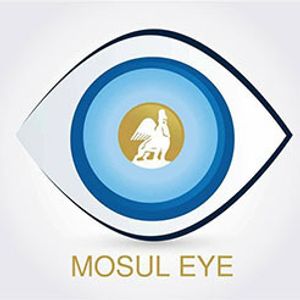Fruit Trees in Mosul:
https://twitter.com/MosulEye/status/1361607259927805953
Along with peaches, zerdali, apricots, apples, pears, pomegranates, plums, quinces, melons, watermelons and figs, the plentiful fresh fruits of Mosul, nuts such as walnuts, almonds, and pistachios are also grown. Photo: Zerdali: A variety of apricot.
Vegetables: Those most commonly cultivated include spinach, mallow, purslane, beans, okra, eggplants, peas, black-eyed peas, broad beans, various kinds of zucchini, tomatoes, Jerusalem artichokes, radishes, celeriac, parsley, cress and all varieties of cucumber.
Grapes are one of the most important sources of agricultural gains for Mosul. A portion of them are consumed fresh, locally & abroad. The rest are used to produce molasses, wine and rakı. Around Sincar a kind of molasses, which is very famous & appreciated, is produced from figs.
Palm Trees have probably disappeared from Mosul around mid the 19th century. Historical records mentioned Palm Trees, but no evidence of productive farms. Currently, only used for decoration in home gardens.
Although Mosul’s olives are only produced in Akra, villages such as Bashika, Behzani, Alqush, many trees died in the heavy snows and rains in 1906 and Daesh destruction of olive farms in 2014 so olive oil is rare nowadays.
Sesame and its oil are plentiful in Mosul. Helwa, Tahina and similar items are made of sesame in Mosul. It is used instead of olive oil, too.
Dye Plants: Madder is planted for dying fabrics, but in insufficient quantities, even for Mosul itself.
Aromatic Plants: Among this sort of plants, rose trees are ubiquitous here and only used to extract rose water. Due to lack of interest, they are not used for anything else. Currently, only used for decoration in home gardens.
Bean Varieties: Chickpeas, broad beans, beans, lentils and some animal fodders are widely grown both in the centre of Mosul.
Grain Varieties: The primary varieties of grains, wheat, barley, corn, maize, sesame, maş(mung beans) are found in every part of Mosul and grow abundantly. Wheat and barley grains are plentiful and common. Their harvests yield from 30 to 40 times the seed planted.
It is important to note that Mosul was subject to more than 17 different environmental catastrophic events since the 17th century. The most brutal ones happened in the late 19th century. The city lost most of its agricultural variates.
One of the reasons you would find Mosuli historians includes agriculture, climate change, and the environment in their historical records. Agriculture dominated the historiography of Mosul for over 3 centuries.
I forgot to mention, the naturally grown Liquorice on the shores of Dijla river. Mosulis use it for local consumption as juice socially in Ramadan, it is also one of the main exported products of Mosul. The city is still exporting Liquorice to Europe, mainly France, UK and Italy.
